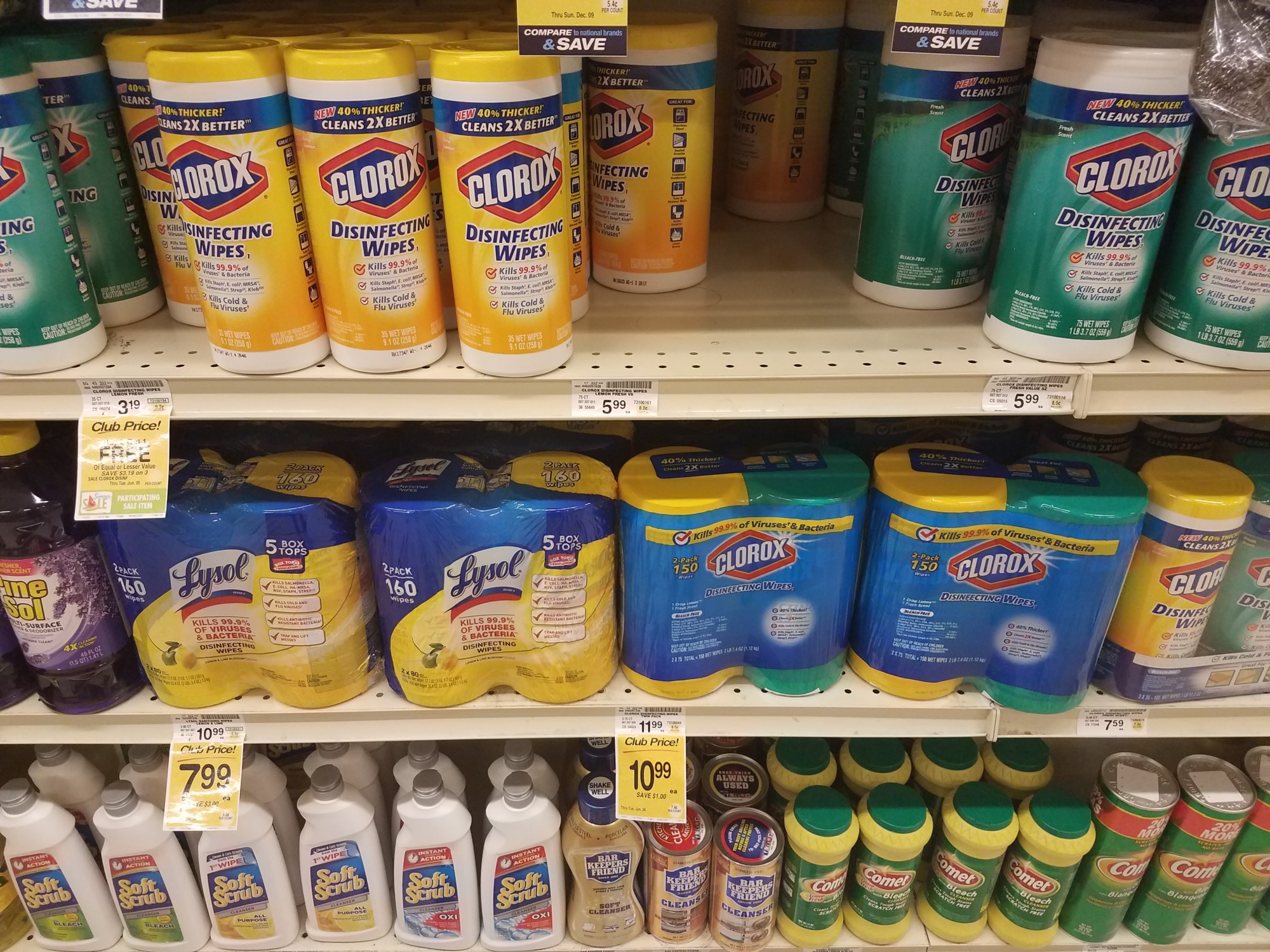Unit Price
6/3/18
At the store, we are often concerned about prices (understatement of the year). However, "unit price" is sometimes more relevant. This article looks at the basic concept of unit price, with an example.
Expand and study this picture:
Let's assume I need to buy 100 wipes. As you can see in the picture above, I could buy the smaller Clorox disinfecting wipes "buy 2, get 1 free". This would amount to spending 2*3.19 = $6.38. For this, I'd get 3 containers, which at 35 wipes per container makes 105 wipes. The unit price, ie the price per wipe, is $6.38/105 = $.067 per wipe, or say 6.7 cents per wipe.
On the other hand, on the shelf below that, there is a much larger pack of Clorox disinfecting wipes. Note that these wipes are otherwise the exact same thing (40% thicker, cleans 2X better, etc.). This is an important point. Try to compare things that are as close as possible. This choice comes with 2 packs amounting to 150 wipes, and sells (at the "Club Price") for $10.99. The unit price of these is $10.99/150 = $.073 per wipe, or say 7.3 cents per wipe.
Therefore, drumroll..., the smaller packs are a better deal. Not only am I spending less overall money, but the unit price is smaller.
The "winner" in this problem could change if the data and assumptions are different. What if there was no sale? What if you need more than 100 wipes? What if there are more than 2 or 3 choices?
The example here is basic, but it is something that we can face quite frequently. It would be advantageous to you to learn how to do these types of problems in your head, obviously estimating where needed. In this case, if you prefer, it is probably better to just get the Lysol, with a unit price of $7.99/160 ~ $.049 per wipe, or 5 cents per wipe. If you do that, you'd be assuming the quality is comparable.
Thanks for reading!
Please anonymously VOTE on the content you have just read:
Like:Dislike:
